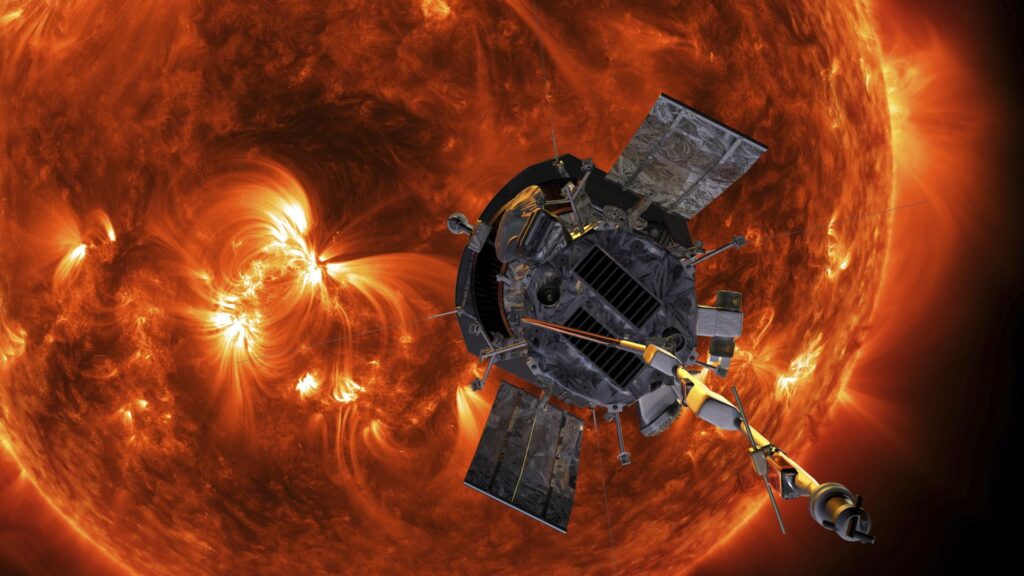NASA’s Stunning Asteroid Imaging: A New Era in Space Exploration
In a remarkable milestone that highlights the wonders of contemporary space exploration, NASA has successfully obtained exceptionally detailed images of an asteroid characterized by researchers as “remarkably intricate.” This celestial object, situated within our solar system, provides insights into the ancient and complex processes involved in planetary formation. As scientists analyze the data derived from these groundbreaking photographs, they aspire to uncover mysteries that could broaden our comprehension not only of asteroids but also of Earth’s formative history. The images are part of NASA’s latest mission and exemplify cutting-edge technology and innovative methodologies that are transforming our capacity to explore and understand the universe.
NASA Reveals Complexities of Asteroid Through Detailed Imaging
Navigating new frontiers in space research, NASA has unveiled a collection of highly detailed images showcasing the multifaceted characteristics of a nearby asteroid. These high-resolution visuals, captured using state-of-the-art imaging technologies developed by the agency, reveal the asteroid’s remarkably complex surface features, providing scientists with an invaluable opportunity to study its diverse landscapes—ranging from deep craters to steep cliffs. This extraordinary dataset enables researchers to hypothesize about the asteroid’s formation and evolution while enhancing our understanding of lesser-known celestial bodies within our solar system.
The imagery not only exposes dynamic features on the asteroid but also serves as an essential resource for future exploratory missions. The observations indicate a variety of materials present on its surface which could be crucial for upcoming mining projects or scientific investigations. Key features identified include:
- Craters: Varied sizes suggesting a history marked by impacts.
- Cliff Faces: Sheer drops potentially housing fascinating geological formations.
- Dense Regolith: Loose soil layers offering clues about soil development.
This pioneering imaging initiative underscores the importance of continued exploration while improving our mapping capabilities regarding asteroids. The potential for revealing not just historical data about this asteroid but also insights into its future trajectory and interactions within our solar system renders these findings invaluable. As NASA continues its analysis, further surprises may await discovery—keeping both scientists and enthusiasts eagerly anticipating what lies ahead.
Scientific Value Of High-Resolution Asteroid Images
The recent high-definition photographs have uncovered a treasure trove of intricate details that provide scientists with an unparalleled view into both morphology and geological history associated with these celestial entities. Such comprehensive imaging allows researchers to scrutinize aspects like surface texture, crater density, and possible indicators of past geological activity. The complexities revealed through these visuals suggest that asteroids—often perceived merely as remnants from planetary formation—may possess far more dynamic histories than previously recognized. Gaining insight into these characteristics is vital for understanding early solar system dynamics as well as planetary body evolution.
The contributions made by these photographs can be categorized across various scientific disciplines including:
- Planetary Science: Improved comprehension regarding planetary formation processes.
- Astrobiology: Discovery opportunities for organic compounds potentially illuminating life’s origins.
- Crisis Management Studies: strong >Evaluating risks posed by near-Earth objects (NEOs) while refining impact trajectory models. li >
A comparative analysis highlighting key features observed across different asteroids can further clarify their diversity: p >
| Asteroid Name th > | Notable Feature th > | Scientific Importance th > |
|---|---|---|
| Asteroid 101955 Bennu td > | Rubble-pile structure td > | Provides insights into planet-building blocks .< / td > tr > |
| Asteroid 16 Psyche< / td > | Metallic core< / td > | Offers unique perspectives on planetary cores .< / td > tr > |
| Asteroid 243 Ida< / td > | (Double system with moon )< / td > | (Challenges traditional notions ) .< / td > tr >
|
